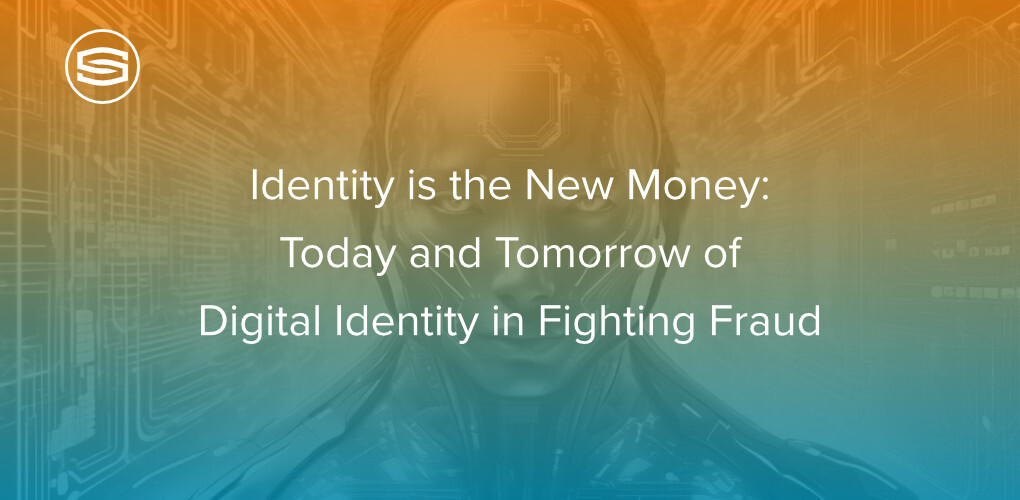
Insights & Opinions
Identity is the New Money: Today and Tomorrow of Digital Identity in Fighting Fraud
Thu, 04 Jul 2024


In the rapidly changing world of financial services, the role of identity has undergone significant transformation. Previously, identity was often led by IT departments. However, it is now taking a more prominent place on board agendas iand becoming a cross-functional business need, risk, and opportunity.
Although not a new concept, the phrase "identity is the new money" effectively captures this shift, emphasising the vital role of digital identity in the financial ecosystem. This phrase is also the title of a book by David Birch, clearly a visionary in the identity space, as the book was first published in January 2014.
Identity has become a crucial enabler of security, customising services, addressing fraud, and providing a highly personalised customer experience across channels. Furthermore, these priorities need to be balanced with the increasing demand for seamless financial services in journeys such as onboarding, transaction management, and loan approvals.
This article is a summary of a conversation with Adam Preis, Director of Product and Solution Marketing at Ping Identity. It delves into the current state of digital identity and its potential impact on combatting fraud in the future.
Digital Identity as a Critical Asset
Traditionally, identity functioned behind the scenes to ensure appropriate access control within financial institutions. However, in recent years, this has changed, especially in retail banking. Identity now gives organisations the ability to control the access given to different parties in various contexts based on perceived risk and needs.
Adam Preis emphasises, "if you get your identity wrong, you're going to deliver a bad experience. If you're not going to secure customers' data, they will leave." In today's competitive market, robust identity and access management system capabilities are not only a security measure but also a business enabler.
Regulatory frameworks such as GDPR and eIDAS, PSD2 and forthcoming PSD3/PSR1 in Europe, and initiatives like Open Banking have led to increased emphasis on converged identity access management, an integrated approach to managing both identity and access across various systems, applications, and environments within an organisation.
These regulations promote innovation and interconnectivity through APIs (Application Programming Interfaces) across and beyond the financial services ecosystem but in secure environments. Consequently, these frameworks also require enhanced security measures, compelling banks to adopt more sophisticated identity verification processes. Regulatory bodies are propelling this change, ensuring that banks offer secure and seamless experiences for their customers.
Identity as the New Money
Converged identity access management has evolved into a cornerstone of financial transactions. Just as money facilitates trade and commerce, digital identity enables secure and seamless interactions in the digital economy. Adam Preis noted that "digital identity can be used to build more value propositions for banks as a business enabler and as a financial gain to diversify their services."
Embedded finance, where financial services are integrated into non-financial platforms, exemplifies the economic value of identity. For instance, when a customer books a holiday package, embedded finance allows them to obtain credit at the point of purchase seamlessly. This process relies heavily on robust identity access management to ensure creditworthiness and secure transactions.
As Adam Preis points out, "identity is critical to establishing whether a customer has the creditworthiness and a recognisable bank to back the transaction."
Challenges and Opportunities in a Hyperconnected World
The hyperconnected nature of today's world presents both opportunities and challenges to grow market share, or to create new value for customers. On one hand, it facilitates seamless interactions and transactions; on the other, it opens new avenues for sophisticated fraud. Cybercriminals are increasingly using advanced techniques like synthetic identity fraud and authorised push payment (APP) fraud to exploit vulnerabilities.
Traditional Know Your Customer (KYC) processes, while necessary, are no longer sufficient. Continuous identity verification and real-time adaptive access decisioning throughout the customer journey is essential to detect and prevent fraud in real-time.
Adam Preis emphasises, "KYC is no longer enough to mitigate fraud. We need continuous assurance and identity verification throughout the process."
Technological advancements, particularly in AI and machine learning, play a pivotal role in combating fraud. These technologies can analyse vast amounts of data in real time, identifying patterns and anomalies that may indicate fraudulent activities. AI enhances the ability to detect and respond to fraud proactively, providing a significant advantage in the fight against cybercriminals.
The Future of Digital Identity
Decentralised identity systems, where users control their identity credentials, are going to move toward mass adoption over the next 2-4 years with the advent of the eIDAS 2.0 and EUDI regulations at the EU level. These systems reduce the risk of large-scale data breaches and provide users with greater privacy and control over their information. The convergence between authentication, authorisation, and identity verification represents a fundamental change in how identity is managed and secured.
Future regulatory frameworks, such as the European Digital Identity Wallet, PSD3/PSR1, will continue to shape the landscape of digital identity. These regulations aim to provide more secure and user-friendly identity verification processes, reducing fraud and enhancing consumer trust.
Effective fraud prevention requires collaboration across industries. Financial institutions must work closely with technology companies, regulators, and other stakeholders to develop comprehensive fraud prevention strategies. This cross-industry collaboration is essential for creating a unified front against increasingly sophisticated fraud tactics.
Conclusion
The notion that "identity is the new money" underscores the pivotal role of digital identity in the financial sector. As we navigate the complexities of a hyperconnected world, robust converged identity access management is essential for combating fraud and enhancing customer trust. The future of digital identity lies in continuous innovation, advanced technologies, and collaborative efforts across industries. By embracing these changes, financial institutions can secure their place in the digital economy and build a safer, more secure future for their customers. Learn more about the Ping Identity solutions for financial services here.



